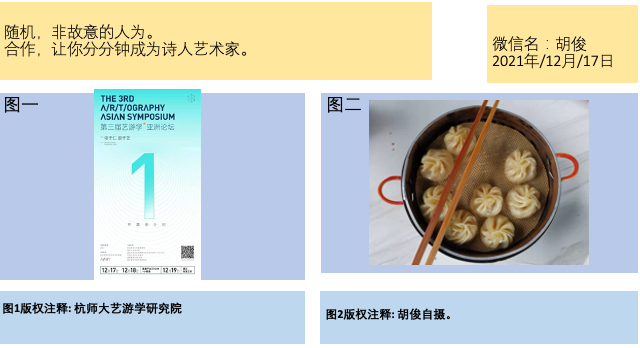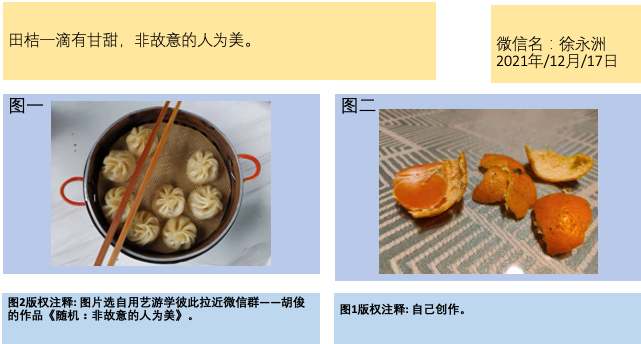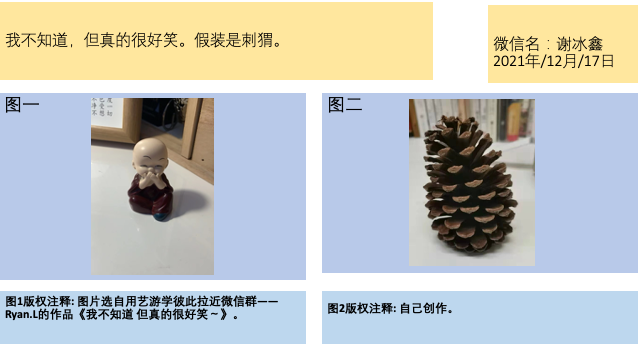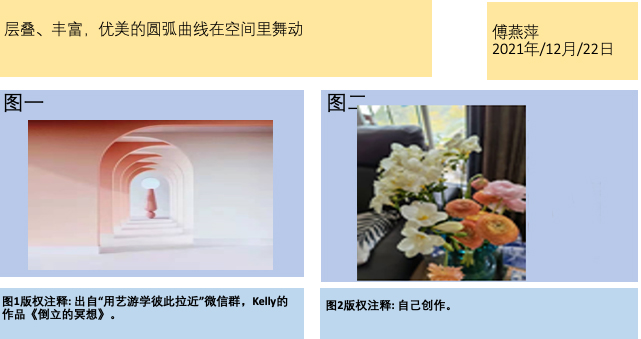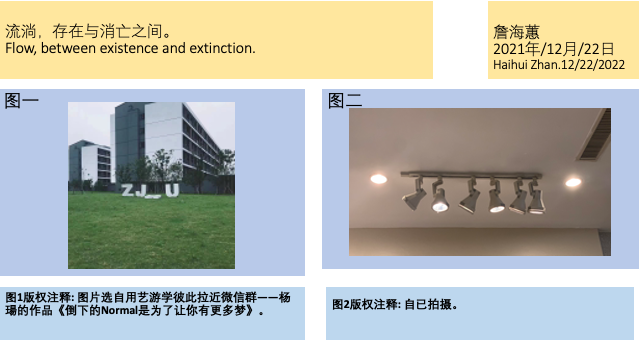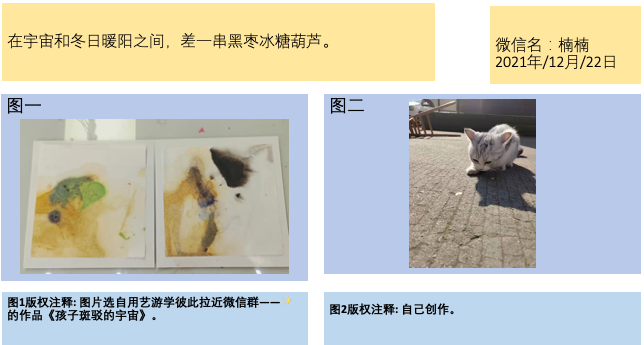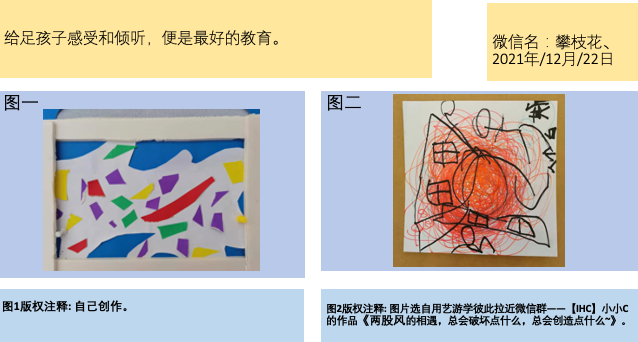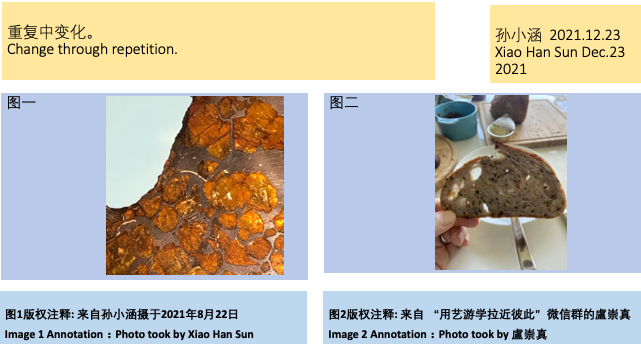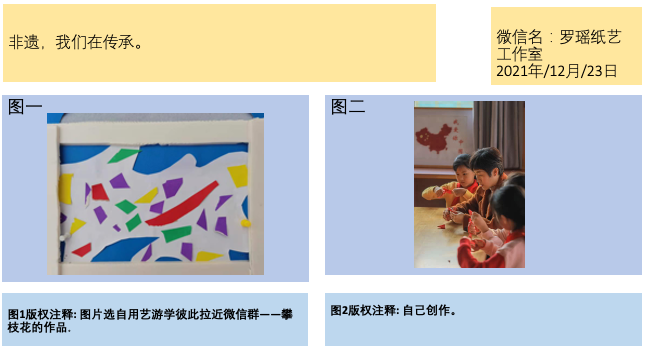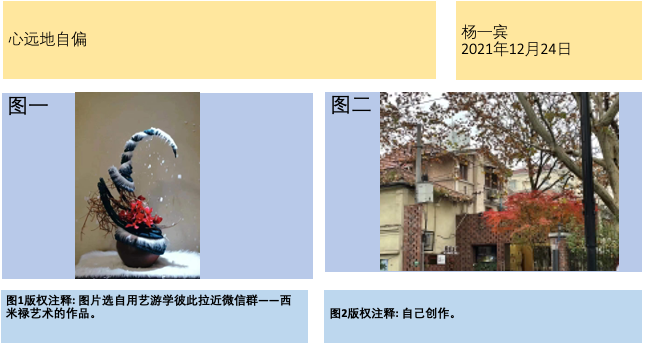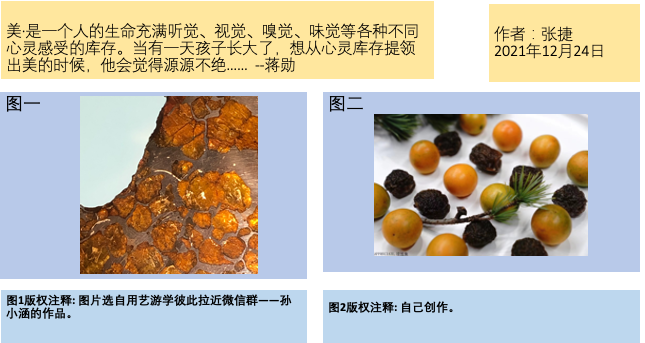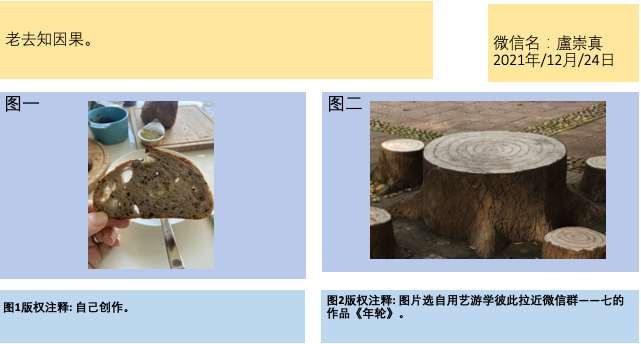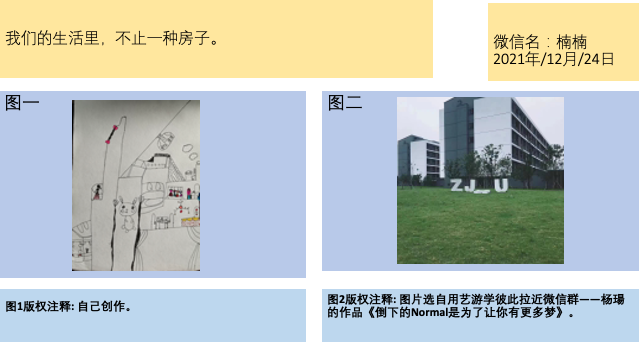Protocol
One Week in Advance
- Send an email to the potential participants with the invitation.
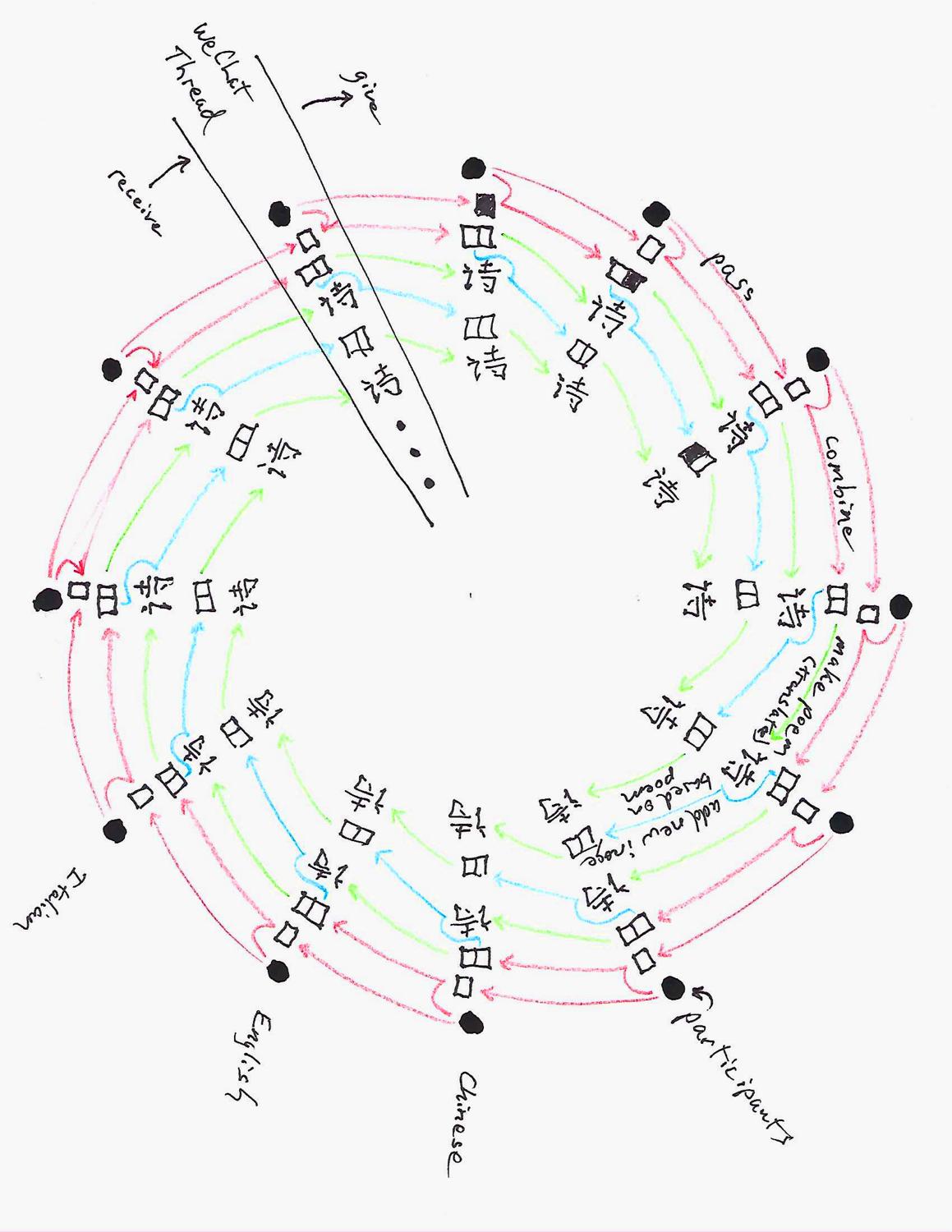 Three Days in Advance
Three Days in Advance
- Participants install WeChat on their phones and add the coordinators as contacts.
- Participants are arranged in a cycle, alternating as much as possible between native languages.
- Each participant is connected with the next participant in the cycle as a contact and accepts the connection of someone else in turn.
First Hour (Morning, Central; Evening, China)
- Each participant chooses a 3" x 4" vertical, found or made the image (copyright-free), and sends it in a chat to the next participant.
- Each participant combines the image they sent and the image they received into a horizontal diptych, with their image on the left.
- Each participant sends this diptych to the next participant, along with the original image they received.
Ongoing for the next 47 Hours
- Upon receiving a diptych (with a single image), participants compose a one- to two-line poem in response to the diptych, and forward it to the next participant, along with the single image they received.
- Upon receiving a poem (with a single image), they are to add a new image to the image received, that responds to the poem as translated by We Chat, creating a new diptych. This diptych, as well as the received image, are passed to the next participant.
Upon Completion
- Individual threads will be shared with participants in the Group Thread. A discussion of the process can follow in the thread.
Follow Up
- Other possible configurations:
- A slide show, alternating diptychs and poems, can cycle through each thread. This can be shown live or played online as a video.
- It can be represented all at once, by a grid, that can be projected or printed.
- It can be represented as a concentric cycle, and projected, printed, or made into a navigable Prezi.
Background
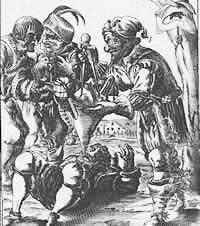 As one possible entrance into the following para-educational protocol, we might simply
evoke what Paulo Freire calls “the great achievement of Gabriel Bode.” Bode's great
contribution was to solve the recurring impasse of people failing to decode a singular
politically-compressed image, by showing next to it a variety of other “auxiliary”
images that would keep the conversation from lapsing into silence. From image, via
images, to spoken words.
As one possible entrance into the following para-educational protocol, we might simply
evoke what Paulo Freire calls “the great achievement of Gabriel Bode.” Bode's great
contribution was to solve the recurring impasse of people failing to decode a singular
politically-compressed image, by showing next to it a variety of other “auxiliary”
images that would keep the conversation from lapsing into silence. From image, via
images, to spoken words.
We should recall, however, that the sonorous, for Freire, is linked to banking education,
where inputs match outputs. So is it that the image — or of great necessity, that
mother of invention — images, trouble the too facile, or too silent, mouth?
Without answering this, let us throw up another image, next to that of this sonorous
bank. The term, familiar in German, that is translated as "Nuremberg Funnel" can be
traced back, at least, to Georg Philipp Harsdorffer. It suggests a mechanical aid
to learning that funnels knowledge through the head or mouth. But what is of interest
is that in the baroque Europe of 1647, Harsdorffer evokes this image in a work titled
"Poetic funnel: The art of German poetry and rhyme, without using the Latin language,
poured in VI hours." In this work on poetry, Harsdorffer explores a mechanical, combinatory
practice for producing poetry that involves laying different words up against each
other in order to computationally evoke latent poetic effects.
The above protocol has no comment on this juxtaposition. It simply attempts to produce,
within a fixed number of hours, a combinatory effect of images and poetry, be it as
it may.
Context
Participants from within and outside China will be sought and arranged in a cyclic fashion, alternating culturally and linguistically as much as possible. Participants will then be asked to pass, via WeChat, an image, that will then be combined with an image they receive, to produce an image pair. Each participant will then produce a poem of one or two lines based on this image pair, which will then be passed to the next participant in the simultaneous cycle. Each poem will be converted into a further image pair, and each image pair into a poem. After 48 hours, this will conclude, and the resultant images and poems will be collectively shared, mindful of their arrangement.
Protocol Working Group
Hu Jun, professor and chair, Art Education, Hangzhou Normal University, Hangzhou, China
Chris Moffett, former visiting assistant professor, University of North Texas, Denton, U.S.
Submitted Content
